Oomnitza: IT Asset Management on your smartphone
January marked the seventh anniversary of the launch of the iPhone.
Looking back at the launch, it’s remarkable how many product features Steve Jobs announced that are now taken for granted; touch screen, multi-touch, large music library on your phone etc.
One of the most transformative impacts of the smartphone and associated apps is the plethora of devices we no longer need. For many folks, who needs a watch, camera, calculator, and notepad, PDA, Map etc. when I have a smartphone?
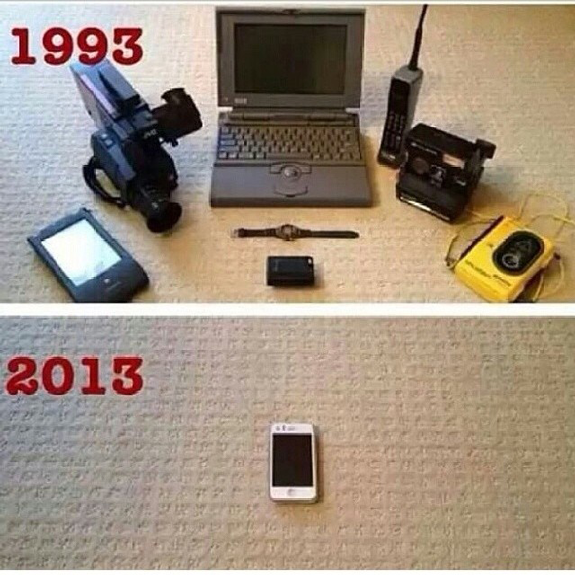
Oomnitza Review
Over the last few years I’ve seen quite a few IT Management tool vendors offering mobile versions of their software. Mostly this has been in the service management space – allowing customers to view or approve tickets or view status updates.
I recently had a call with Oomnitza, a new Asset Management start-up who offer a mobile centric offering for managing assets. This is the first app I’ve seen that really takes advantage of smartphone features.
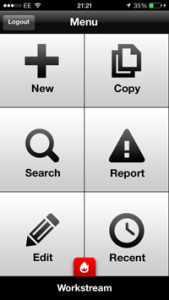
Main navigation on Oomnitza mobile app
I gave it a very quick road test. Here is the process I followed:
- I downloaded the free app onto my iPhone. They also have an android version.
- You then associate your app with an online cloud account as you might with any other smartphone app to allow your asset data and activities to be squirted up to the cloud.
- Once the app is on your phone you can access a simple navigation to start some asset management tasks
- I added my own machine (A mac book pro) by clicking add and scanning the barcode (bye-bye hand-held asset scanner!)
- I also took a photo (Taken late at night in the dark but you get the idea!) the smartphone automatically also captures my current location
- The app then synchronizes this new data with the cloud account behind the scenes keeping a record of my activity
- I can then login to my online Oomnitza account (a SaaS based asset repository) to view details of my recently created record
- The image I captured for the device becomes the avatar for the asset in the repository.
- My new asset is then searchable online and can also be updated by a mobile device by scanning the barcode and recalling the asset record
- Within the online SaaS account custom fields can be created, workflows can be initiated based on certain conditions and work orders can be created based on activity out in the field.
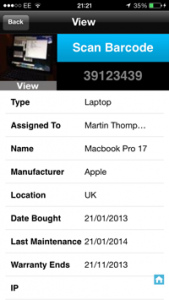
Asset detail, barcode scanning and image
Feedback / Observations:
- This is worth a look for anyone doing physical walk around IT audits or engineers or support staff out in the field needing to update assets. I found it very easy to use and navigate online.
- I love the way they are fully exploiting smart phone features (camera, bar code scanner, location, background sync) – most engineers and support staff are very likely to have their phone on them at all times anyway so this is a great way of updating assets whilst out in the field without having to remember to bring a cumbersome asset scanner
- I thought using the image as an avatar for the asset was cool – it sure is a lot more interesting to search through real images than an excel sheet of line items in an asset register. In the past I’ve been onsite doing asset updates with business units whereby it would have been really handy to know what the heck the device actually looked like in order to find it, especially devices that are a bit off the beaten track. But I’m not sure if this cool feature would be of any business use to large standardized environments – for example tracking 10,000 identical Toshiba laptop models.
- Oomnitza didn’t disclose pricing so I don’t know if this is competitively priced or good value for money
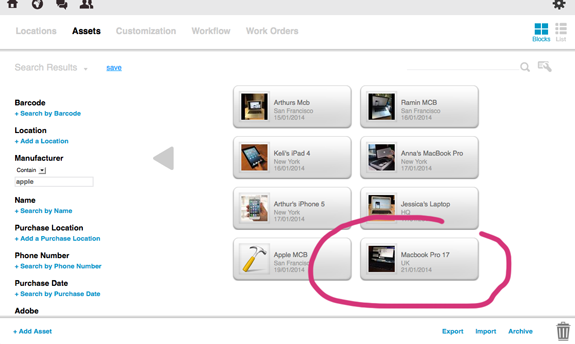
Online view of assets captured on mobile device – with image as the avatar
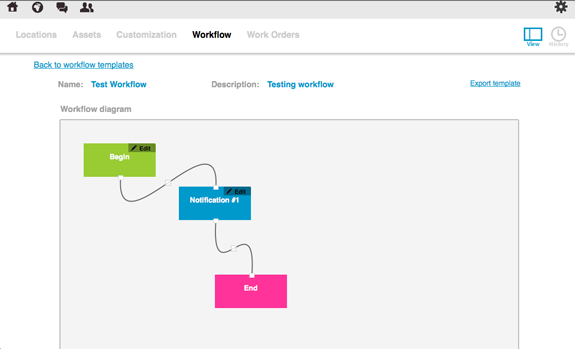
Kicking off workflow based on triggers in asset activity or changes of data
Growth
In terms of future development and positioning in the market – the online SaaS asset repository part of Oomnitza has potentially lots of overlap with existing ITAM and ITSM tools. One option would be to purely focus on the mobile bit, be the best at it and offer workflow, automation and integrations with existing tool sets rather than reinvent the wheel (especially for larger enterprises).
The existing ITAM and ITSM markets are busy, competitive and it takes a long time to get organizations to budge on their toolsets, just focussing on the mobile piece and doing it very well might be a quicker route to growth for Oomnitza, at least in the medium term.
Whatever they choose to do, it’s great to see some innovation and new thinking in this area of the market.
More info here: www.Oomnitza.com
Can’t find what you’re looking for?
More from ITAM News & Analysis
-
ITAMantics - April 2024
Welcome to the April 2024 edition of ITAMantics, our monthly news podcast where we discuss the biggest ITAM stories from the last month. George is joined this month by AJ Witt and Ryan Stefani. Stories tackled ... -
Broadcom is removing expired VMware licences from its portal - take action now!
Hot on the heels of Broadcom’s announcement of the end of perpetual licences for VMware it has given customers barely a week to download any keys for licenses from its portal with expired support. This is ... -
Who Loses When Broadcom Wins?
News of a new Broadcom deal rarely arrives with great fanfare. The November 2023 VMware acquisition provoked open worry online and in business circles, with many critics wondering whether the former Hewlett-Packard spinoff’s reputation would prove ...